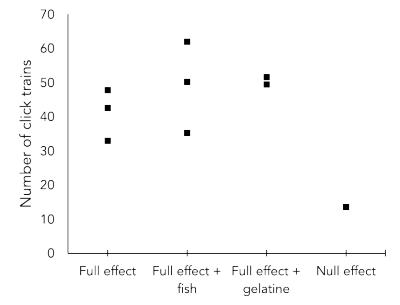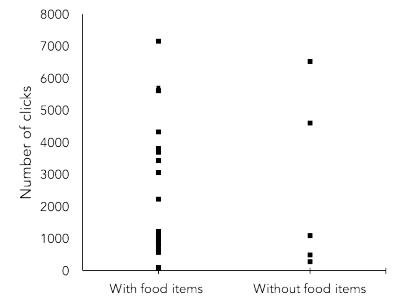Introduction
Echolocation, which bottlenose dolphins use to study their habitat; navigate and detect preditors and prey, is often not well stimulated in bottlenose dolphins under human care, due to the barren pool conditions that can be provided in zoos and aquaria.
The aim of this study was therefore to investigate if an introduction of two alternative. artificial environmental enrichment items to the bottlenose dolphins at Kolmården Wildlife Park, Sweden, would stimulate the animals to use their sonar.
The enrichment items
The meandering hose
The meandering hose could be set in three active states (full effect, full effect + fish and full effect + gelatine) and in one non-active state (null effect). When the hose was set in any of the three active states, the hose, which was connected to a high- pressure water outlet, could be turned on by the dolphins aiming their sonar towards its tip. This would make the hose move in a meandering fashion. In two of these active states, food items (fish and gelatine cubes) was loaded into the hose and ejected into the pool when the water outlet was opened by the dolphin sonar. This was made possible to see if the food items in the water, would stimulate echolocation.
When the hose was set in its non-active state, the high-pressure water outlet would not be turned on even if the dolphins aimed their sonar towards it, and the hose would remain still in the water.
The coral sand box
The box was presented to the dolphins only containing the coral sand and it was presented to them having food items (fish and/or gelatine cubes) buried in the coral sand. This was done to investigate if the dolphins were able to locate the food items buried in the sans, and if so, if the presense of food items in the sand would stimulate echolocation.
Main results
The meandering hose
The average number of click trains per dolphin aimed at the hose was 16.47 ± 1.35 s in active hose sessions and 13.50 s in the non-acrive session.
No significant difference was found in the number of click trains per dolphin aimed at the hose between the active hose sessions.

The coral sand box
No significant difference was found in the number of clicks aimed at the sand in the box between sessions with food items buried in the sand and sessions without food items buried in the sand.

Conclusions
The meandering fashion of the hose stimulated the dolphins to use their sonar more than the non-active hose. However, the ejection of food items from the hose into the pool, did not have any significant effect on the dolphins' use of sonar.
The dolphins used sonar clicks when exploring the box, but it is not clear if they were able to retrieve the food items from the box using their sonar to locate them. Furthermore, the food items in the box did not significantly increase the sonar use of the dolphins compared to when the box contained only coral sand.
Responsible for this page:
Director of undergraduate studies Biology
Last updated:
05/20/17
